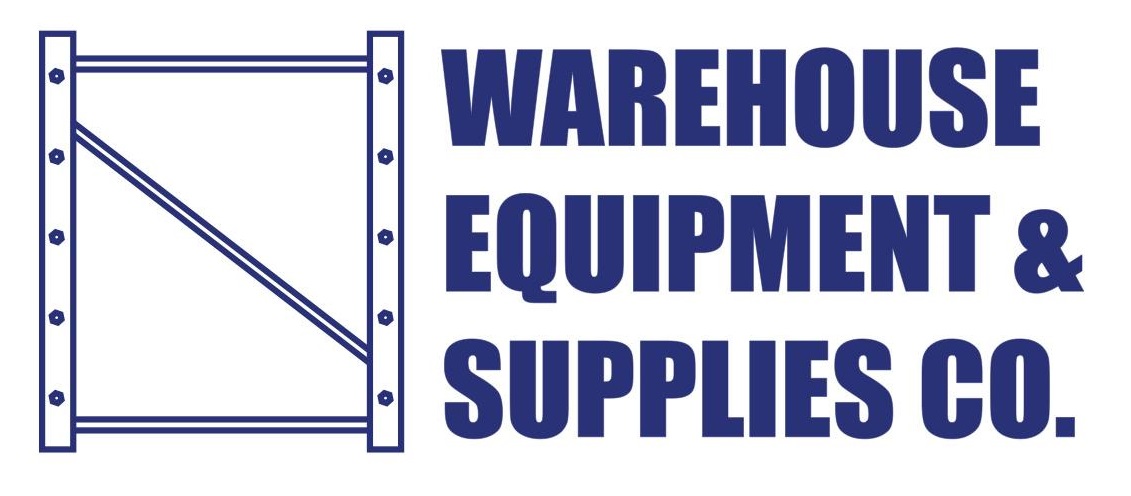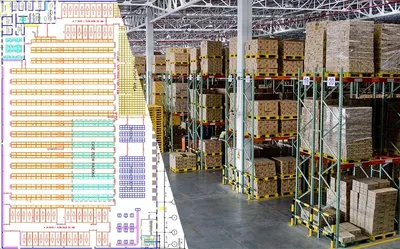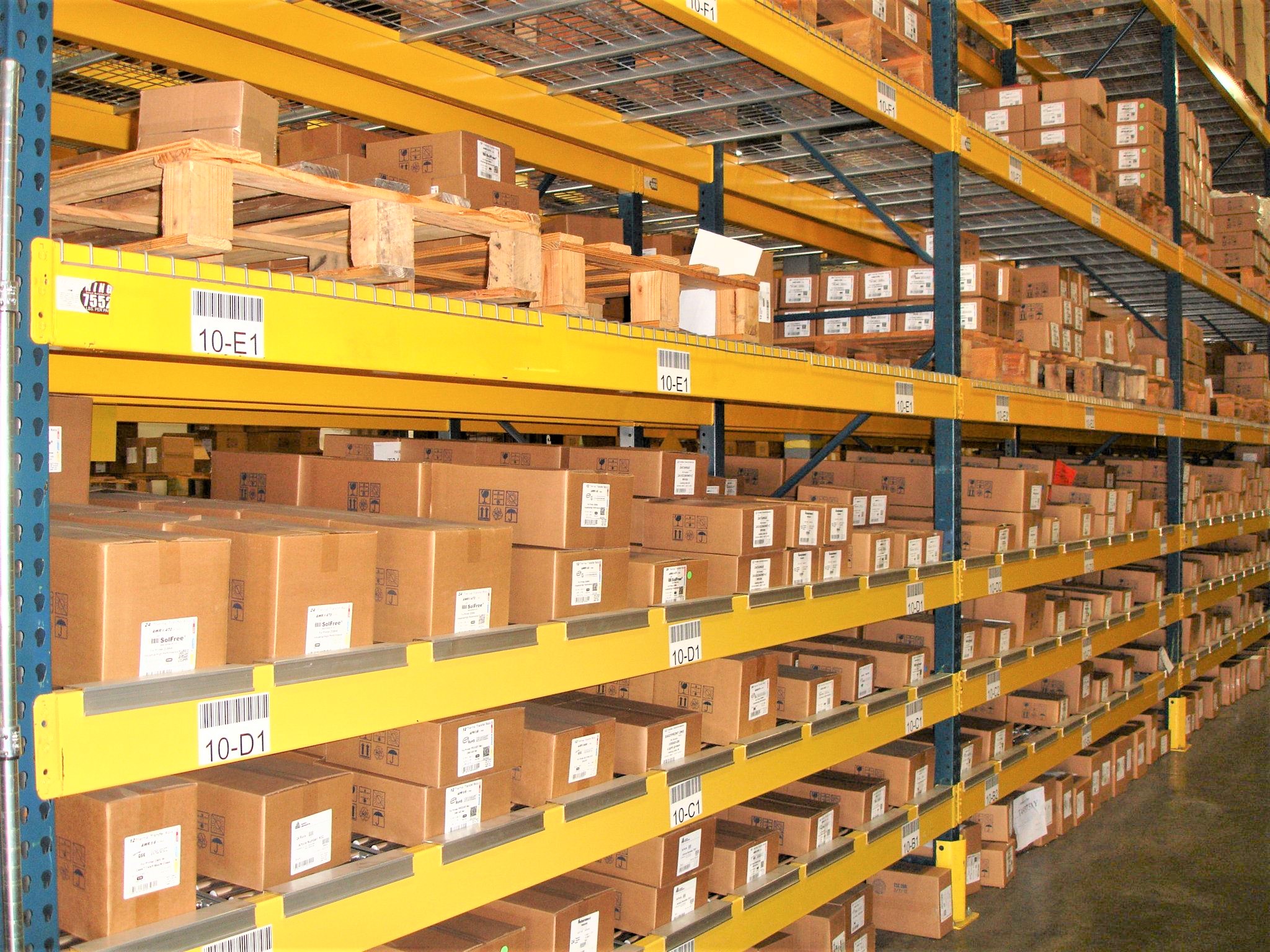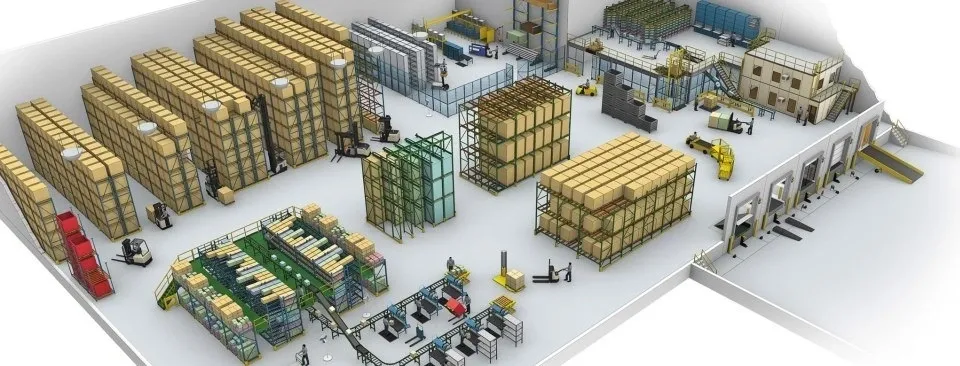The first step in designing a new pallet racking system is to understand the workflow, capabilities, and limitations of your warehouse.
Have you been charged with developing your facility’s pallet racking system and don’t know where to start? Are you moving into a new building and need help designing a storage solution for your warehouse?
In our extensive experience working with customers from all industries, we find that customers sometimes will spend time trying to design their pallet racking device before meeting with us. While it never hurts to come into a meeting with additional information, we find that using a team of experts from the start can help save valuable time for you and your business while ensuring that you get the best solution to suit your warehouse.
Not only can we provide a pallet racking design for your facility quickly, we also have the requisite resources to ensure that our design is correctly engineered and complies with industry standards and regulations. Understanding how each of these aspects apply to your facility will help you get primed, trained and comfortable to go into your first consultation on the design of your pallet racking system.
9 Things to Consider When Designing a Warehouse Pallet Racking System
Continue reading for 9 things you need to learn about the operation, strengths and drawbacks of your warehouse when designing a new pallet racking system.
1. Pallet Size and Type
The weight and measurements of the pallets (length, height, width) are important measurements to be aware of when designing a pallet racking system . For most applications the industry standard pallet size (40 “x 48”) is a perfect fit. The size of the pallet will help determine system dimensions such as the depth and height of the uprights.
The type of palletized items will influence the type of pallet racking system required if the items:
- Need specific environmental conditions
- Are fragile and cannot be stacked
- Are date-sensitive / have expiration dates
2. Order of Inventory Retrieval: LIFO vs FIFO
Whether your system requires inventory retrieval by LIFO (last-in-first out) or FIFO (first-in-first-out) is crucial in deciding the type of storage and pallet rack solutions needed. If your goods are date-sensitive, you’ll probably need a system that enables the longest in stock products to be delivered first-FIFO. If your product’s shelf life isn’t date-sensitive, a LIFO program can be used to maximize warehouse space.
3. SKU / Pallet Count
The number of SKUs in a facility and the number of pallets per SKU play a major role in deciding the type of pallet racking system you may need. In applications where there is only one pallet per SKU, selective pallet racking can be used as it enables flexibility for SKUs thus making them readily available.
Facilities with multiple pallets per SKU may want to use a higher density storage system, such as drive-in or push back pallet racking. Facilities with a high number of pallets per SKU that also involve FIFO retrieval of inventories may consider investing in a pallet flow racking system.
4. Warehouse Environment
The cost of your racking system will fluctuate according to the type of environment your products require. Things can be stored in a variety of different situations, including:
- Cold temperature (freezer or cooler)
- Controlled temperature
- Ambient temperature (material does not need a particular temperature)
Ambient environments are where temperature in the factory is not a critical factor in maintaining product integrity. Cold warehouse environments typically store food or other perishable items at low temperatures, Whereas temperature-controlled warehouses often store items such as drugs, tobacco, etc. where temperatures are kept within an acceptable range to maintain the integrity of products.
Predictably, conditions where temperature isn’t critical will cost less. Typically, pallet racking systems are most costly in a cold environment since they require:
- Long installation-installers cannot spend long periods in a freezer
- Strategic set-up-since refrigerator / freezer storage space costs more, strategic planning is needed to ensure storage space is maximized
- Food grade conditions-since cold warehousing environments usually store food items, certain FDA compliance criteria are required. Pallets holding food items, for example, must be kept at least 12 inches off the ground
5. Building Structure
Whether a pallet racking system is constructed as an improvement to an existing building or installed in a newly built building may impact the budget of the project, schedule, available warehouse space and more. Certain important considerations relating to the building structure include:
- Column spacing – you need to be conscious of where the support columns are and how they are separated from each other in order to “bury” them in the gap between back-to-back rows of racking
- Internal ceiling height – this will tell us how tall the uprights and beam levels can be
- Location and measurements of dock doors
- Usable warehouse space
6. Product Flow / Accessibility Requirements
Slow-moving products as well as fast-moving products occur in every warehouse. It’s important to know which of the products have a faster turnaround period and need to be more frequently accessed. Knowing how this can impact the design of your system will help maximize the retrieval time, particularly for products with a quick turnaround time.
Data on product flow and accessibility can also help to decide which SKUs to store closer to the shipping and receiving areas, and whether you may need high-density storage for some SKUs and more flexible storage for others.
If your facility often has large orders with an almost immediate turnaround time, setting up a staging area near the shipping doors for temporary storage of those products is a good idea.
7. Material Handling Equipment in Your Facility
The type of material handling equipment (forklift, lift truck, or man-up order picker) used to collect pallets in your warehouse and its size is critical for determining the width of the aisle and the number of racking rows that will fit into a facility.
For example, an industry standard 12-foot aisle would be required if you’re using a standard counterbalance forklift, whereas man-up order pickers can maneuver through much narrower aisles. It is desirable to construct a warehouse with the aisles as narrow as possible, as this enables maximum storage space.
8. Seismic Activity
Whether your facility is in an area with frequent / severe seismic activity or not can impact the type of material and support that a system will need. If your facility is in an area with high seismic activity, higher gauge steel (sometimes structural steel is needed, as roll-formed steel is weaker), wider / larger footplates and additional anchor reinforcements may be required for the pallet racking system. Basically, the more seismic activity in your area, the more structural integrity your system will need for seismic movement to handle, which will increase the cost of your racking system.
9. Understanding Your Budget and Acceptable ROI
New vs. Used Pallet Rack Systems
“What about used pallet racking?” This is a question we get asked frequently. While used systems can save you some upfront costs, in the long run they usually end up costing more, because:
- Their structural integrity is uncertain
- A third-party structural engineer is needed to review and approve existing structures which is an expensive service
- They are not customized to match the products, workflows or needs of your facility.
In short, going with a used pallet racking system is a riskier option. By making the investment for a new system up front you will receive a system with the following advantages:
- Uncompromised structural integrity
- Guaranteed to pass permit inspection
- Tailored to the needs of your facility
The Type of Pallet Racking System
Some types of pallet racking systems have more features and capabilities than others, and therefore, are more expensive. Selective pallet racking is the most cost-effective option, with the shortest lead time. So, if your facility doesn’t actually require high-density storage, selective pallet racking may be the best option for you.
However, if higher density storage is needed, depending on your circumstances you may need to use drive-in pallet racks, push back pallet racks or even pallet flow racking.
Utilizing a Team of Professionals
As mentioned above, utilizing a team of professionals to design your pallet racking system is the best way to ensure that your system is:
- Designed quickly and efficiently
- Engineered according to industry standards and regulations
- The best solution for your facility
Conclusion
We hope this article has helped you understand the pallet racking needs of your facility and become more comfortable having an informed talk with a specialist. In conclusion, the 9 things to consider when designing a warehouse pallet rack system are:
- Pallet size and type
- Order of inventory retrieval
- SKU / pallet count
- Warehouse environment
- Building structure considerations
- Product flow / accessibility requirements
- Material handling equipment in your facility
- Seismic activity
- Understanding your budget and acceptable ROI
Our team of Warehouse Design Specialists are dedicated to providing complete, custom designed pallet racking systems and other industrial systems. Our experts will meet with whomever supervises your facility to ensure we get every detail needed to design your pallet racking system effectively.
If you are ready to take the next steps towards a more efficient and flexible warehouse, please book a call with one Racking Specialists or email us the details of your project at sales@warehouseequipmentsite.com. Our passion is to provide warehouse storage systems for our customer to help their businesses thrive.






